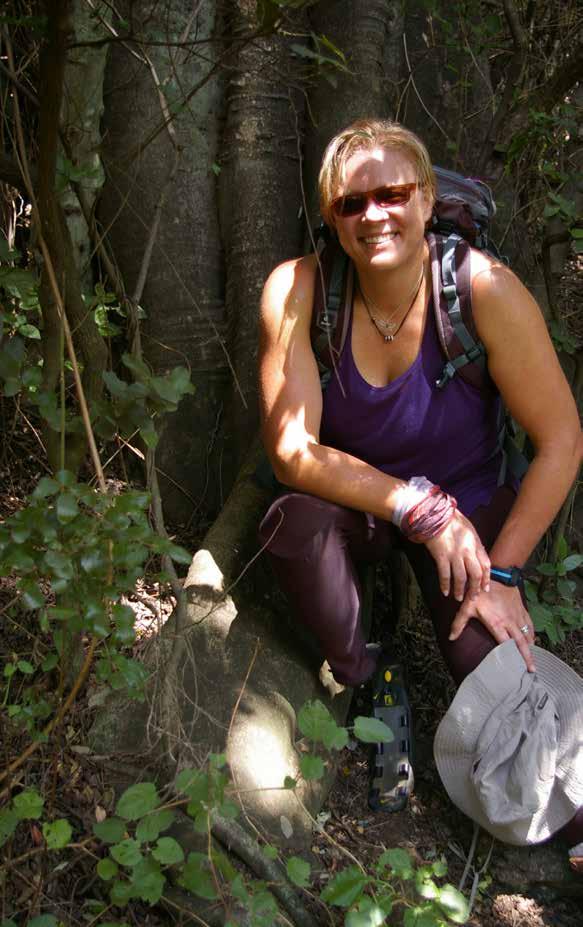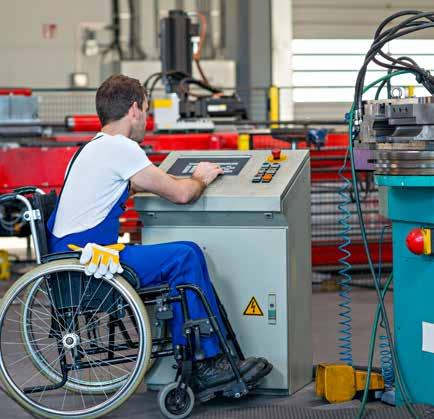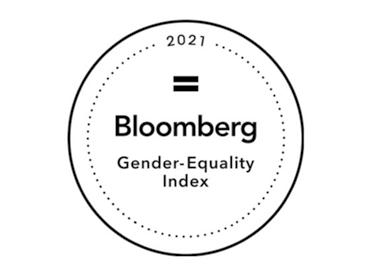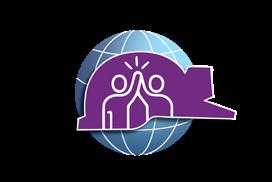
3 minute read
Including people with disabilities – the next frontier in business acumen
INCLUSIVITY
Including people with disabilities
Advertisement
– THE NEXT FRONTIER IN BUSINESS ACUMEN
The necessary facilities need to be in place to accommodate disabled people
The statistics on people living with disabilities are very outdated, with the most recent drawn from the 2011 census. This recorded around 7.5% of the South African population as disabled, with less than 1% of this group being gainfully employed. By Maria Combrink *
Within the mining sector, 3 500 people with disabilities were employed in 2009 – this accounts for 0.7% of total employment in the mining sector. These statistics are very disconcerting, especially if one looks at the benefits companies can reap when employing people with disabilities.
Benefits of including disabled people in the workforce
Employing people with disabilities makes great business sense, as they tend to be more loyal when appointed, are more focused on safety, and are no more likely to be injured than an able-bodied colleague. Creating teams that are diverse build stronger relationships, boost staff morale and improve the company’s public profile.
From a financial point of view, companies can employ people with disabilities in an internship position and earn a tax deduction upon completion of the learnership. Unfortunately, many companies do not make use of this opportunity to identify and retain talent. Talent that might be packaged slightly differently from what is expected to be the norm.
Attracting and retaining people with disabilities
To attract and retain people with disabilities must be part of the recruitment and selection of candidates. To ensure that reasonable accommodation is already part of the recruitment process, for instance, advertising should be done in an audible as well as a visual format, to ensure that people with visual impairments also have access to the position and opportunity to apply.
Regrettably, most recruiters do not know how to respond to applicants with disabilities. However, this can easily be mitigated by identifying exact requirements for a position, clearly describing the necessary skills and capabilities, and setting reasonable criteria. The criteria should be applied to all possible candidates.
Should a candidate with a disability be successful, reasonable accommodation in the work environment must be discussed. This might include installing ramps, raising awareness within the team, or acquiring appropriate software. Reasonable accommodation is not a one-size-fits-all solution but must be evaluated on a case by case basis and will be disability dependent.
INCLUSIVITY
Maria Combrink believes that employing people with disabilities makes great business sense

Companies are starting to realise that there are benefits to employing and retaining disabled candidates – not only for social development but also for the financial bottom line of the organisation. Mining companies such as Harmony are starting to include people with disabilities in their supply chain, Petra Diamonds actively recruits people with disabilities, and Anglo American has joined The Valuable 500 to show its commitment to putting disability on the leadership agenda.
What does this mean to me – a person with a disability – working in mining?
Hopefully, this means that I can confidently disclose my disability at the beginning of the application process – without fear that it may hamper my chances of employment. Perhaps it also means that I will still get the opportunity to travel for work and have a seat at the table. It should certainly mean that I get a fair and reasonable shot at a decent career path.
*Maria Combrink is a senior data geologist at CSA Global. She regards herself as able and agile.










